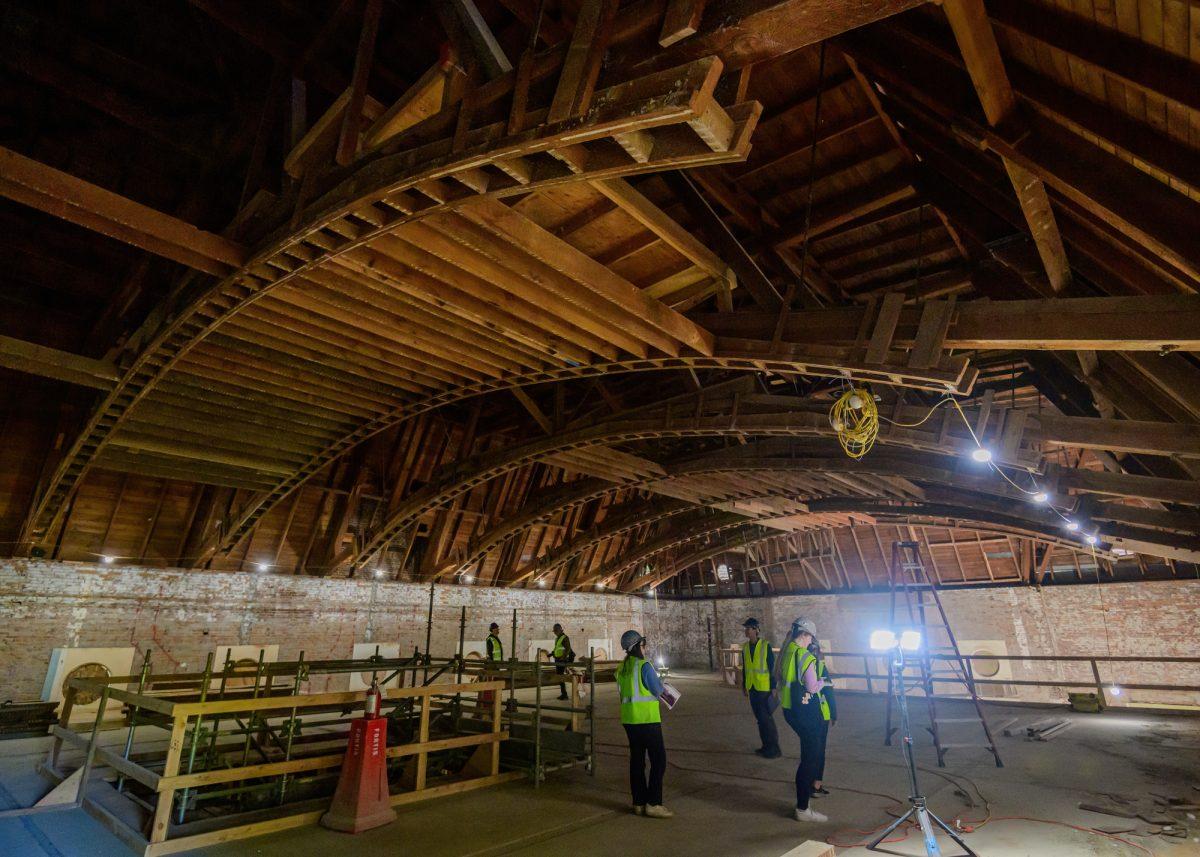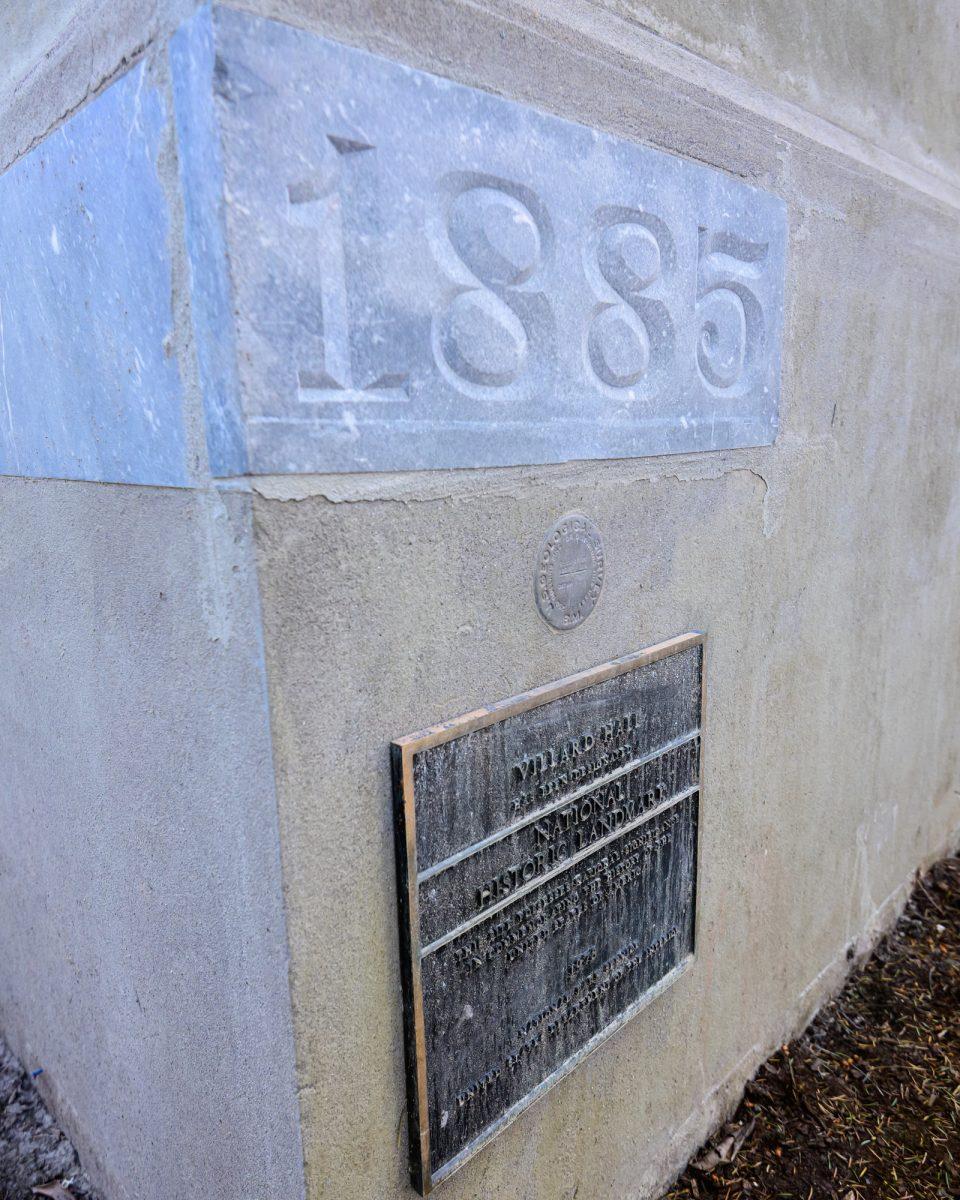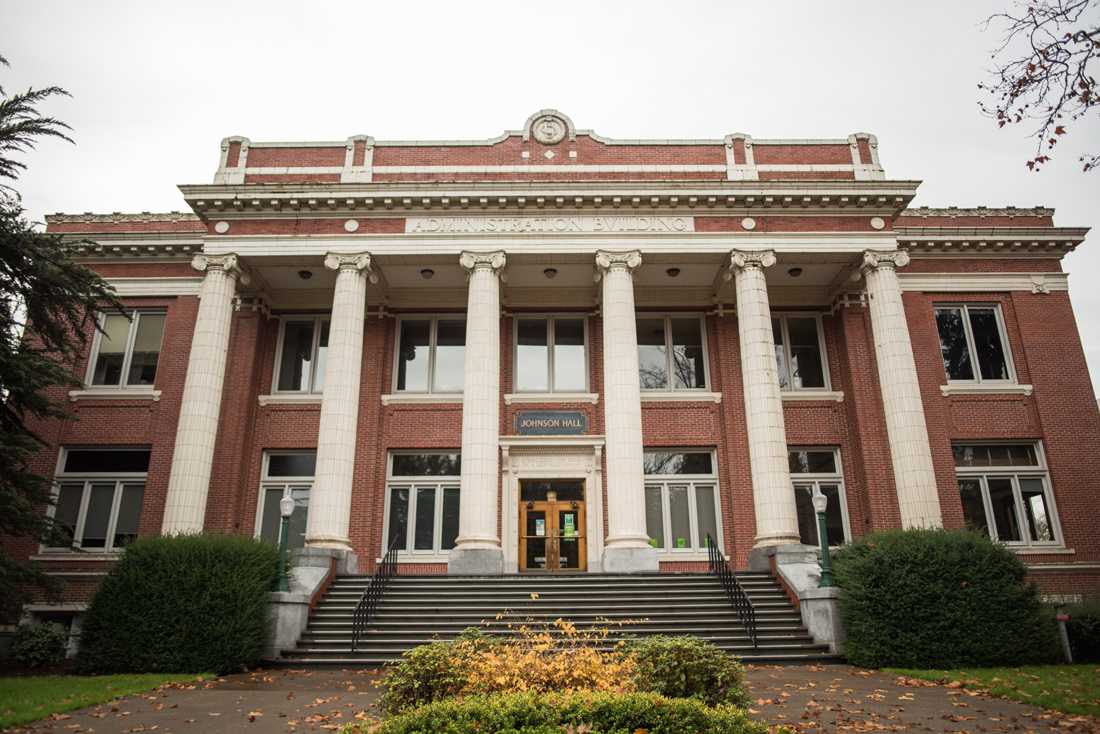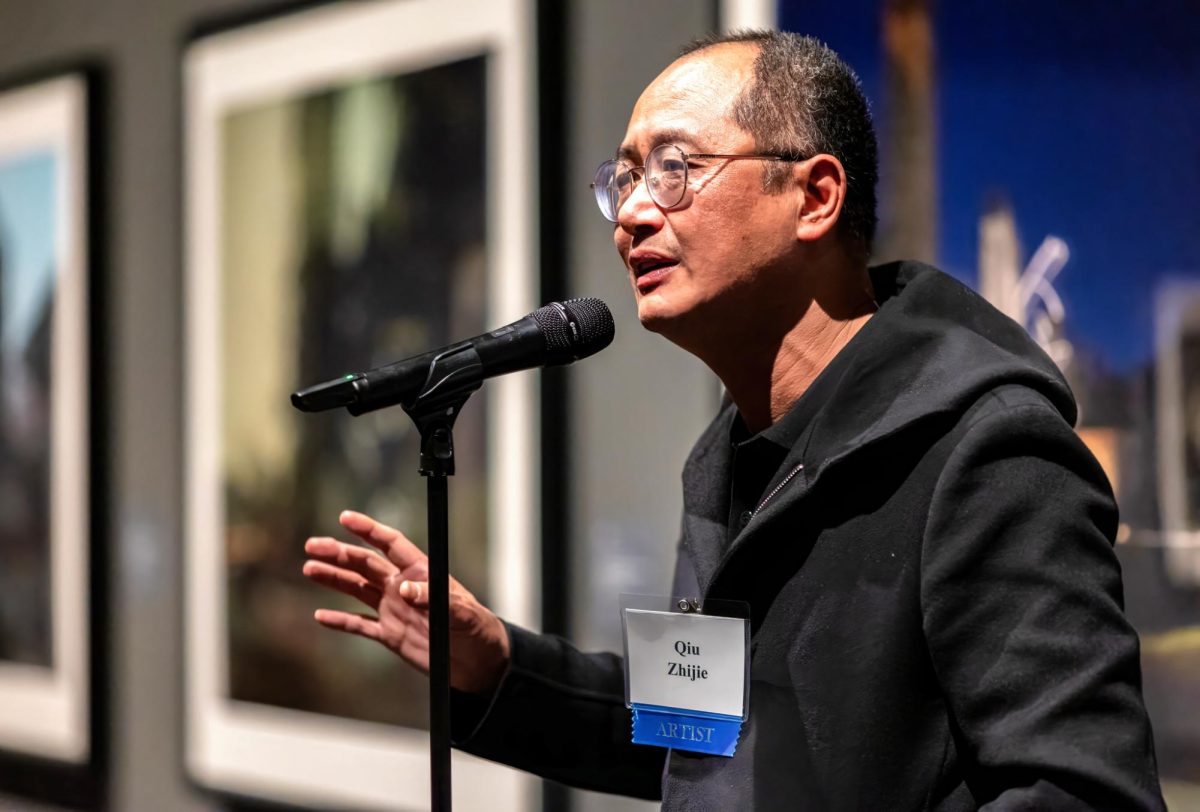The University of Oregon continues its Heritage Renovation Project, with its two oldest campus buildings, University Hall and Villard Hall, remaining closed for renovations. When complete, the renovations will update the heating and ventilation systems and provide modern classroom environments.
The total budget for the Heritage Project, including the reconstruction of both buildings, is $93 million. $58.5 million of the funds comes from XI-Q and XI-G bonds from the state of Oregon. The remaining funding is from UO and state Continuous Improvement Plan funds.
XI-Q bonds are to be used for property owned or operated by the state of Oregon. XI-G bonds are from the Higher Education Coordinating Commission.
Both University and Villard Hall are a National Historic Landmark in Oregon. As both buildings are of historical importance, the renovation project aims to keep all the characteristics of the buildings’ exteriors — including original construction and decorative features.
Once the reconstruction project is complete, the buildings should “look almost like when they were originally built,” according to Gene Mowery, an owner’s representative for Campus Planning and Facilities Management. An owner’s representative acts as an overseer and advisor throughout the design and construction process.
On the inside, the construction team has “demolished [the buildings] down to their studs,” Mowery said. The new floor plans indicate the open spaces will be used for modern classrooms, offices and specialty spaces for the academics that will call the buildings home.
Before its closure, Villard Hall was home to UO’s theater arts program. When it opens again it will host the theater again, but also UO’s cinema studies program. At the end of its reconstruction, Villard Hall will have resources like a screening lab, the Pocket Playhouse Theater acting lab and a movement acting lab available for students in both programs.
The reconstruction will update building systems as well. Mowery said that both buildings have the original steam heating system, and there will be more energy-efficient systems that will provide “modern day” heating, cooling and ventilation after the reconstruction. There will also be updates to make the buildings proficient with the Americans with Disabilities Act, including larger doorways.
The buildings are not currently able to withstand a major seismic event, as they are currently built using unreinforced masonry that is only brick exterior with no steel reinforcement on the inside. After the project, the inside of the walls will be reinforced with 10-inch thick concrete.
Tim Allenbaugh, an owner’s representative, said the concrete is “bracing [the walls] at a lot of critical points in the buildings.”
Allenbaugh said that the concrete won’t be visible by the time the halls reopen.
All of the brick for the original buildings was made at the Eugene Masonic Cemetery. Compared to modern bricks, Mowery said the bricks used for the two halls are very soft. When Villard Hall was built, and a few years following University Hall’s construction, a coat of concrete parging was put on the exterior walls to protect the bricks. This will be washed off during construction, but will be replaced by a new coat of the same material.
Besides the original exteriors of each building, the original windows and stairwells will be kept on the inside. Any wood being taken out of the buildings is being stored so it could be reused.
Completion of the Heritage Project is estimated to be done in the summer of 2025, with hopes students will be able to access the buildings when the following fall term begins.
The National Historial Landmark plaque can be seen on the exterior of Villard Hall. University and Villard Hall, two of the oldest buildings on the grounds of the University of Oregon, undergo an extensive renovation in Eugene, Ore., on April 18, 2024. (Eric Becker/Emerald)







